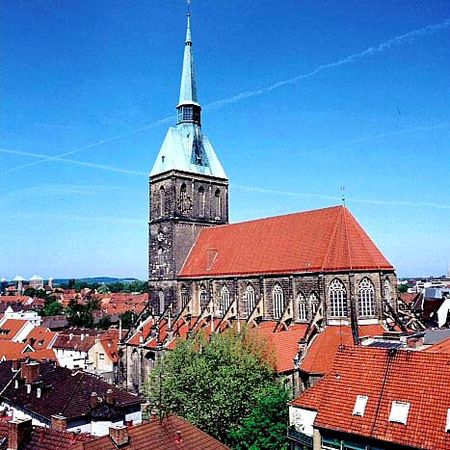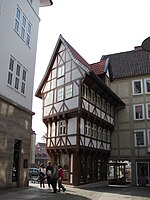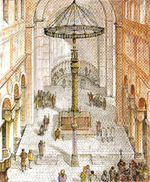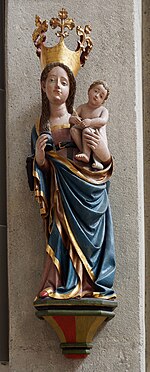St. Andreas, Hildesheim
Christian organizations established in the 11th centuryChurches completed in 1504Churches completed in 1883Gothic architecture in GermanyLutheran churches converted from Roman Catholicism ... and 2 more
Lutheran churches in HildesheimOttonian architecture

The church of St. Andreas is the principal Lutheran church of Hildesheim, Germany, not to be confounded with the Catholic Hildesheim Cathedral. Its tower is 114.5 metres (376 ft) tall, making it the tallest church tower in Lower Saxony; it is accessible (364 steps) and offers a panoramic view of both the city and surrounding countryside.
Excerpt from the Wikipedia article St. Andreas, Hildesheim (License: CC BY-SA 3.0, Authors, Images).St. Andreas, Hildesheim
Andreasplatz, Hildesheim Altstadt (Stadtmitte/Neustadt)
Geographical coordinates (GPS) Address Website External links Nearby Places Show on map
Geographical coordinates (GPS)
| Latitude | Longitude |
|---|---|
| N 52.151666666667 ° | E 9.95 ° |
Address
St. Andreas
Andreasplatz 4
31134 Hildesheim, Altstadt (Stadtmitte/Neustadt)
Lower Saxony, Germany
Open on Google Maps










